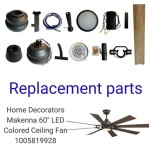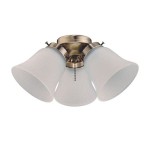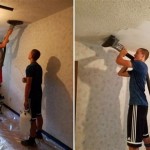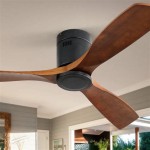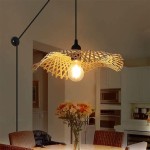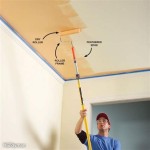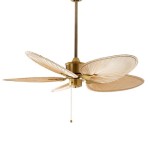How to Remove Black Mold From Drywall Ceiling
Black mold, a type of fungus more accurately referred to as *Stachybotrys chartarum*, can pose significant health risks and structural damage, particularly when it infests drywall ceilings. Its presence often indicates underlying moisture problems requiring immediate attention. This article provides a comprehensive guide on safely and effectively removing black mold from drywall ceilings, emphasizing the importance of proper precautions and remediation techniques.
Before commencing mold removal, it is crucial to accurately identify the substance as black mold. While visual identification can be suggestive (often appearing as dark green or black splotches), laboratory testing is recommended to confirm the mold species and assess the potential health risks. Mold testing kits are available for DIY sampling, or a professional mold inspector can be hired to collect and analyze samples. Understanding the specific type of mold present allows for the selection of the most appropriate removal methods and safety measures.
The extent of the mold infestation determines whether DIY removal is feasible or if professional remediation is necessary. Small areas of mold growth (less than 10 square feet) can often be handled by homeowners with the correct equipment and procedures. However, larger infestations, or if the mold is widespread throughout the ceiling structure, necessitate professional intervention. Professional mold remediation companies possess the specialized equipment, training, and expertise to safely and effectively remove the mold, address the underlying moisture source, and prevent future recurrence.
Addressing the underlying cause of moisture is paramount. Mold thrives in damp environments, so identifying and rectifying the source of moisture is crucial to prevent future mold growth. Common causes include leaky roofs, plumbing leaks, condensation, poor ventilation, and humidity. Conducting a thorough inspection of the roof, attic, plumbing, and surrounding areas can help pinpoint the source of the moisture. Repairing leaks, improving ventilation, and controlling humidity levels are essential steps in preventing future mold problems.
Key Point 1: Safety Precautions and Protective Gear
Prioritizing safety is crucial when removing black mold. Mold spores can cause allergic reactions, respiratory problems, and other health issues. Wearing appropriate personal protective equipment (PPE) is essential to minimize exposure to mold spores. Recommended PPE includes:
Respirator: An N-95 respirator or a full-face respirator with HEPA filters is necessary to prevent inhalation of mold spores.
Gloves: Non-porous gloves, such as nitrile or rubber gloves, protect the skin from direct contact with mold.
Eye Protection: Goggles or a face shield should be worn to prevent mold spores from entering the eyes.
Protective Clothing: Disposable coveralls or clothing that can be easily laundered after use should be worn to prevent mold spores from contaminating clothing.
In addition to PPE, proper ventilation is essential. Opening windows and using fans can help to circulate air and reduce the concentration of mold spores in the air. Sealing off the affected area with plastic sheeting can also help to prevent the spread of mold spores to other parts of the house. Secure the plastic sheeting with duct tape, ensuring a tight seal around doorways and openings.
Consider notifying individuals with respiratory sensitivities or compromised immune systems to avoid the area during the remediation process. Mold exposure can exacerbate existing health conditions, so minimizing their presence during removal is important.
Key Point 2: Mold Removal Procedures on Drywall
Effective mold removal from drywall ceilings requires a systematic approach. These methods should be applied after the source of the moisture has been identified and corrected.
Surface Cleaning: For minor surface mold, a solution of mild detergent and water can be used to clean the affected area. Mix a small amount of detergent with water and gently scrub the mold-affected drywall with a soft brush or sponge. Avoid oversaturating the drywall, as excessive moisture can worsen the problem. After scrubbing, wipe the area with a clean, damp cloth and allow it to dry completely.
Bleach Solution (Use with Extreme Caution): A diluted bleach solution can be used to kill mold on non-porous surfaces. Mix one part bleach with ten parts water. Apply the solution to the mold-affected area with caution, avoiding oversaturation. Allow the solution to sit for approximately 10-15 minutes, then wipe the area with a clean, damp cloth. Bleach is not effective on porous surfaces like drywall because it doesn't penetrate to kill the mold roots. More importantly, bleach can damage drywall and create a health hazard if mixed with ammonia. *This method is generally discouraged for drywall ceilings due to the porous nature of the material and the potential for damage. Use safer, mold-specific cleaners instead.*
Mold-Specific Cleaners: Several commercially available mold cleaners are specifically formulated for mold removal. These cleaners often contain biocides that kill mold spores and prevent future growth. Follow the manufacturer's instructions carefully when using these products. Apply the cleaner to the mold-affected area as directed, and allow it to sit for the recommended time. Wipe the area with a clean, damp cloth after the cleaning process.
Drywall Removal and Replacement: In cases of significant mold infestation, removing and replacing the affected drywall may be necessary. This is especially true if the mold has penetrated deep into the drywall. Cut out the mold-affected drywall using a utility knife or drywall saw. Dispose of the contaminated drywall in sealed plastic bags to prevent the spread of mold spores. Install new drywall, ensuring it is properly sealed and painted to prevent moisture intrusion.
When removing drywall, take extra precautions to prevent the spread of mold spores. Wetting the drywall before removal can help to contain the spores. Using a HEPA-filtered vacuum cleaner can also help to capture airborne spores. After removing the drywall, thoroughly clean the surrounding area with a mold-specific cleaner to eliminate any remaining mold spores.
Key Point 3: Prevention and Long-Term Management
Preventing future mold growth is as important as removing existing mold. Addressing the underlying moisture problem is paramount, but other preventive measures can also be taken.
Ventilation: Ensuring proper ventilation in bathrooms and other areas prone to moisture is crucial. Install exhaust fans in bathrooms and kitchens to remove excess humidity. Regularly clean and maintain ventilation systems to ensure they are functioning properly.
Humidity Control: Controlling humidity levels in the home can help to prevent mold growth. Use a dehumidifier in damp areas, such as basements and crawl spaces. Aim to maintain humidity levels below 60%. Regularly check for condensation on windows and other surfaces, and address any moisture problems promptly.
Regular Inspection: Regularly inspect the home for signs of mold growth. Pay close attention to areas prone to moisture, such as bathrooms, kitchens, and basements. Look for discoloration, staining, or a musty odor. Address any water leaks or moisture problems immediately.
Proper Sealing: Ensure that windows, doors, and other openings are properly sealed to prevent water intrusion. Caulk and seal any cracks or gaps around windows and doors. Inspect and repair roofing and flashing to prevent leaks.
Use Mold-Resistant Products: When renovating or building, consider using mold-resistant drywall and other building materials. These materials are treated with fungicides that inhibit mold growth.
Professional Inspection: If there are concerns about potential mold growth, or if the source of the moisture problem is difficult to identify, consider hiring a professional mold inspector. A professional inspector can conduct a thorough assessment of the home and provide recommendations for mold remediation and prevention.
Thorough drying of affected areas after cleaning is essential. Using fans and dehumidifiers can accelerate the drying process and prevent mold from re-establishing itself. Monitor the area for any signs of recurring mold growth and promptly address any new issues.
Proper disposal of mold-contaminated materials is crucial to prevent further spread. Seal contaminated drywall, cleaning supplies, and protective gear in heavy-duty plastic bags before discarding them. Check with local regulations regarding the proper disposal of mold-contaminated materials.
By following these steps, homeowners can effectively remove black mold from drywall ceilings and prevent future infestations. However, it is crucial to remember that mold remediation can be a complex and potentially hazardous process. If unsure or uncomfortable with any aspect of the removal process, seeking professional assistance is always advisable.

Eliminate Mold From Drywall Removing The Ceiling

How To Remove Ceiling Mold Diy Methods

How To Remove Mold From Drywall Ceilings Step By Guide

Black Mold Removal And Prevention In Bathroom

How To Kill Mold On Drywall Proven Techniques For A Rental Home

Eliminate Mold From Drywall Removing The Ceiling

Ceiling Mold Growth Learn The Cause And How To Prevent It Environix

Ceiling Mold Growth Learn The Cause And How To Prevent It Environix

Ceiling Mold Growth Learn The Cause And How To Prevent It Environix

Black Mold In Bathroom How To Fix Damaged Drywall Doityourself Com Community Forums
